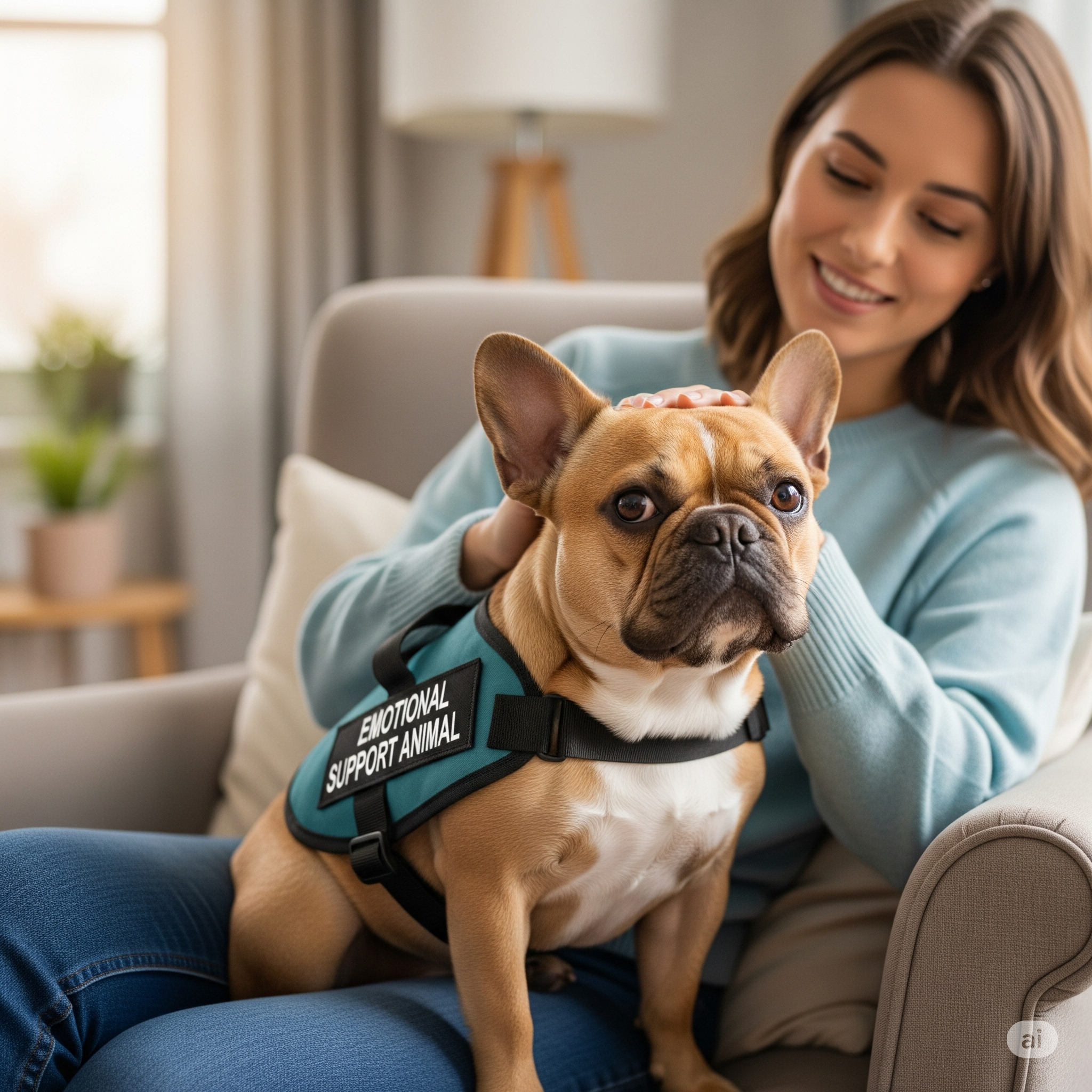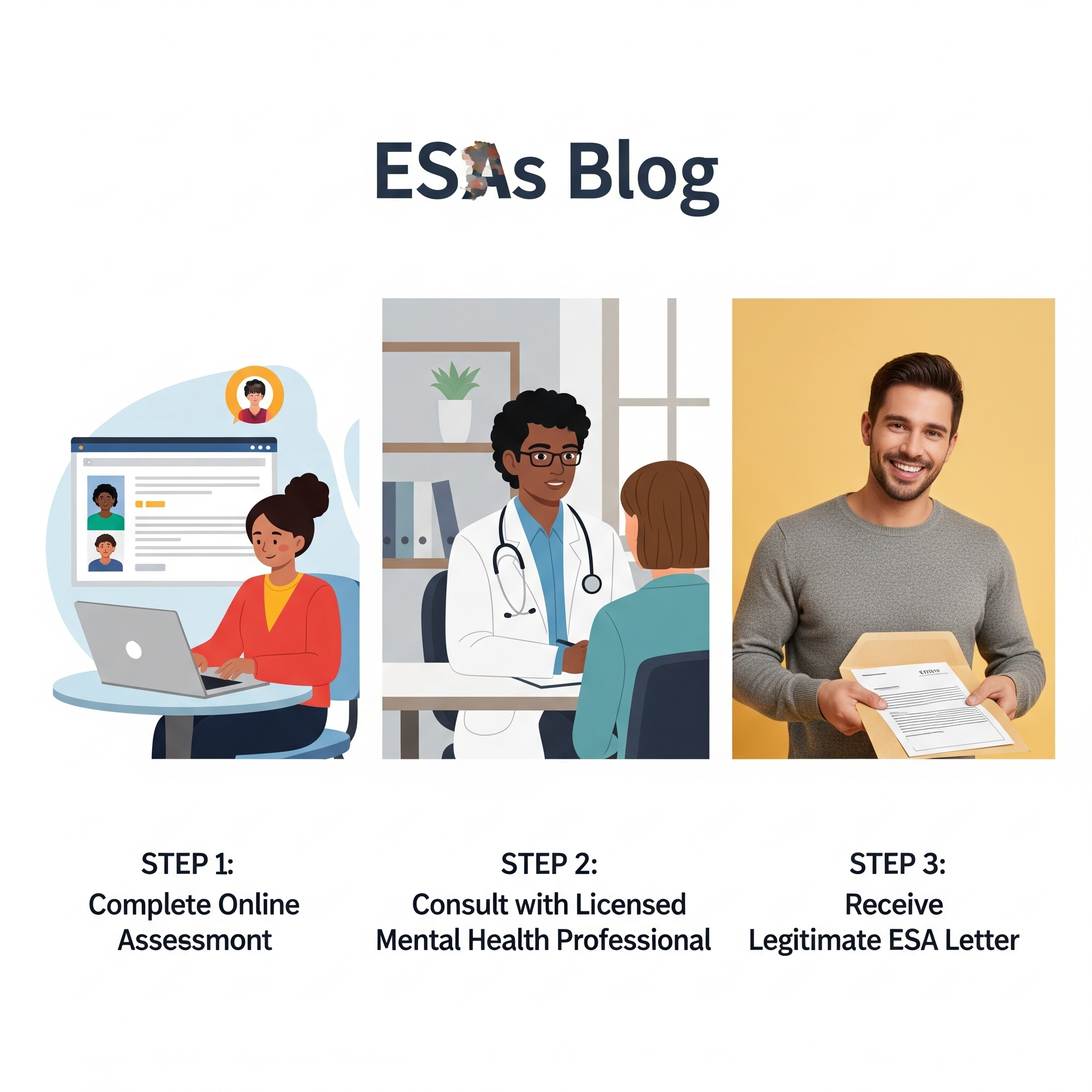Psychiatric Service Dogs (PSDs) are more than just companions; they are highly trained partners that provide invaluable support to individuals managing mental health disabilities. Their ability to perform specific tasks, learned through rigorous training, can significantly enhance their handler’s independence and quality of life. While the specific tasks a PSD performs are tailored to their handler’s unique needs, there are fundamental basic commands that every PSD should master. These commands form the bedrock of their training, ensuring they are well-behaved, responsive, and safe in various environments. This comprehensive guide, brought to you by CertifyESA, your trusted provider of legitimate ESA and PSD letters and resources, will outline these essential basic commands and explain why they are crucial for a successful partnership.
The Foundation of Partnership: Why Basic Obedience Matters for PSDs
Before delving into the specific commands, it’s important to understand why basic obedience is paramount for PSDs. Unlike Emotional Support Animals (ESAs), which provide comfort through their presence, PSDs are trained to perform specific tasks that directly mitigate their handler’s disability-related symptoms. Strong basic obedience skills ensure:
- Reliability: When a handler needs their PSD to perform a task during a moment of distress, the dog’s reliable response to basic commands is critical.
- Safety: In public settings, a well-behaved PSD that reliably obeys commands like “stay” or “leave it” ensures the safety of both the handler and the dog, as well as the general public.
- Accessibility: Good behavior and responsiveness contribute to the positive perception of PSDs in public spaces, helping to maintain accessibility rights for all service animal teams.
- Focus and Control: Mastering basic commands helps the PSD maintain focus on their handler, even in distracting environments, allowing them to be readily available to perform their trained tasks.
- Stronger Bond: Consistent training and clear communication through commands strengthen the bond and trust between the handler and their PSD.
Essential Basic Commands for Every Psychiatric Service Dog
These are the foundational commands that every PSD training program should prioritize:
1. Sit:
- Description: The dog lowers their rear end to the ground while keeping their front legs standing.
- Importance for PSDs: This is a fundamental control command used in various situations. It can be used to greet people calmly, wait patiently, or remain still in crowded areas. It’s also a precursor to more advanced commands like “stay.”
- Training Tip: Use a lure (treat or toy) to guide the dog into a sit position while saying the command “Sit.” Reward immediately when they comply.
2. Stay:
- Description: The dog maintains their current position (sit, stand, or down) until released by the handler.
- Importance for PSDs: “Stay” is crucial for safety and allows the handler to have their PSD remain in a specific location while they attend to other tasks or navigate environments where the dog needs to be stationary. This is vital in situations like waiting in line, navigating doorways, or during medical appointments.
- Training Tip: Start with short durations of “stay” and gradually increase the time and distance. Use a clear hand signal along with the verbal command “Stay.” Release the dog with a specific word like “Okay” or “Free.”
3. Down:
- Description: The dog lies down with their belly on the ground.
- Importance for PSDs: “Down” is a calming and submissive position. It can be used to settle the dog in various environments, especially during longer periods of inactivity, such as during therapy sessions, on public transportation, or in waiting rooms. A dog in a “down” position is less likely to be disruptive.
- Training Tip: Lure the dog from a sit position down to the ground while saying “Down.” Reward immediately. You can also use a hand signal, such as moving your hand downwards.
4. Come (Recall):
- Description: The dog returns to the handler immediately when called, regardless of distractions.
- Importance for PSDs: This is arguably the most critical safety command. A reliable recall can prevent the PSD from running into dangerous situations, such as traffic or approaching unfamiliar individuals or animals without permission. It ensures the handler can regain control of their PSD at any time.
- Training Tip: Start training recall in a quiet, enclosed area. Use an enthusiastic tone and the dog’s name followed by “Come.” Reward generously when the dog reaches you. Gradually introduce distractions and practice in different environments.
5. Leave It:
- Description: The dog ignores or refrains from picking up or interacting with something the handler has indicated.
- Importance for PSDs: “Leave it” is essential for preventing the PSD from ingesting potentially harmful substances, picking up dropped items that might be contaminated, or being distracted by food or other enticing objects in public. This command ensures the PSD remains focused on their handler and their tasks.
- Training Tip: Place a treat on the floor and cover it with your hand. Say “Leave it.” When the dog stops trying to get the treat, reward them with a higher-value treat from your other hand. Gradually increase the difficulty by leaving the treat uncovered for short periods.
6. Heel:
- Description: The dog walks politely by the handler’s side, matching their pace and staying within a designated area (usually by the handler’s left leg), without pulling ahead, lagging behind, or veering off.
- Importance for PSDs: A strong “heel” command ensures the PSD can navigate crowded public spaces safely and efficiently without causing obstruction or disturbance. It allows the handler to maintain control and focus on their surroundings.
- Training Tip: Keep the dog on a short leash. Start in a quiet area and use a lure to guide the dog into the heel position. Say “Heel” as you begin walking. Reward the dog frequently for maintaining the correct position.
7. Off:
- Description: The dog gets off an object (e.g., furniture, a person) when instructed.
- Importance for PSDs: This command ensures the PSD respects boundaries and doesn’t jump on people or furniture without permission. It’s crucial for maintaining appropriate behavior in various social settings and within the home.
- Training Tip: If the dog jumps on something, calmly say “Off” and lure them down with a treat. Reward immediately when all four paws are on the floor.
8. Quiet (or Speak, then Quiet):
- Description: The dog stops barking on command (or learns to bark on command and then stop).
- Importance for PSDs: While some PSDs may be trained to alert to specific sounds or behaviors by barking, excessive or inappropriate barking is unacceptable for a service animal. A reliable “quiet” command ensures the PSD can remain calm and silent in public, preventing disturbances.
- Training Tip for Quiet: When the dog barks, say “Quiet” firmly but calmly. When they stop barking, even briefly, reward them. Gradually increase the duration of silence required before rewarding.
- Training Tip for Speak then Quiet: First, teach the dog to bark on command (“Speak”). Once reliable, you can then teach “Quiet” to stop the barking.
Beyond the Basics: Building a Reliable PSD
Mastering these basic commands is just the beginning of a PSD’s training journey. These foundational skills provide the necessary control and responsiveness for the dog to then learn the specific tasks that directly mitigate their handler’s mental health disability. The training process requires patience, consistency, and positive reinforcement.
CertifyESA: Supporting Your PSD Journey
At CertifyESA, we understand the profound impact a well-trained Psychiatric Service Dog can have on an individual’s life. While we specialize in providing legitimate ESA and PSD letters, we also believe in empowering handlers with valuable resources and information about training and responsible PSD ownership. This guide to basic commands is part of our commitment to supporting the successful partnership between handlers and their PSDs.
Conclusion: Investing in Foundational Skills for a Brighter Future
Investing the time and effort to train your Psychiatric Service Dog in these basic commands is an investment in your independence, safety, and overall well-being. A well-behaved and responsive PSD is a more effective partner, capable of navigating various environments with confidence and reliability. By focusing on these foundational skills, you are building a strong and lasting partnership with your PSD, unlocking greater freedom and support in your daily life.
Reference:
American Kennel Club. (n.d.). Basic Dog Obedience Training. Retrieved from [Insert relevant AKC webpage URL about basic obedience here]





